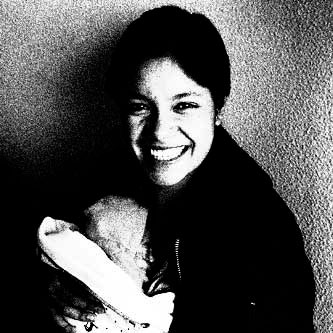The mother kangaroo method
Introduction
“Mother kangaroo” is an innovative method for the treatment and outpatient care of premature and low birthweight children. Warmth, lactation and the kangaroo position are the basic foundations of the method. But more than anything, it is the loving and close relationship established between mother and child that allows the little ones to survive. The important and ongoing stimulus, affectionate as much as physical, improves and guarantees the respiratory and cardiac rhythms. The mother’s voice, her cooing, the surrounding family, all serve as enriching triggers from the neurological and cognitive perspectives. It is the mother, and not the doctors or the hospital, who is in charge and responsible for the care of her baby.
In September 1979, at the Maternal-Infant Institute (IMI) of Bogotá in Colombia, doctors Héctor Martínez Gómez and Edgar Rey Sanabria began to modify the traditional care of premature and low birthweight babies. The new method was coined the “Mother Kangaroo Programme”. The name derives from the similarity between the way that a kangaroo carries her baby after birth, and the way the mothers in the programme carry their premature newborns.
The Mother Kangaroo Method is a model for secure and humanised attention, with an important cost-benefit ratio that allows not only for higher survival rates but also better quality of life. The model may be applied in developed countries as well as in less technologically developed countries. But more than anything, the Mother Kangaroo Method assures the strengthening of close bonds between mother and child and provides the necessary support and emotional balance.
The method combines care in the hospital, an outpatient (ambulatory) clinic and at home, and achieves better results than the more expensive alternative of prolonged hospitalisation. The estimated cost of care in an intensive care unit for premature babies in the United States is approximately US$3,000 to $5,000 per day (UNICEF). Similar care in developing countries is estimated at US$200 per day, while, in contrast, the Programme costs only US$4.60 for the meeting with the hospital.
UNICEF has followed and supported the development of the Mother Kangaroo Method. Since 1979, the innovation has been duplicated in most of the Latin American countries, in several European countries, in some states in the U.S.A., in Asia and in Africa. The method has been adopted in places as dissimilar as the National Institute for Mother and Child in Lima (Peru) and the Soenderborg Hospital (Denmark).
During the 44th Plenary Assembly of the World Health Organization, Héctor Martínez and Edgar Rey were awarded the 1991 Sasakawa Health Prize.
DOWNLOAD THE BROCHURE PDF
albanian (0.9 MB)spanish (0.6 MB)
english (0.6 MB)
serbian (0.6 MB)








 COUNTRY OF ORIGIN
COUNTRY OF ORIGIN OUTSTANDING IDEASS PROJECTS
OUTSTANDING IDEASS PROJECTS